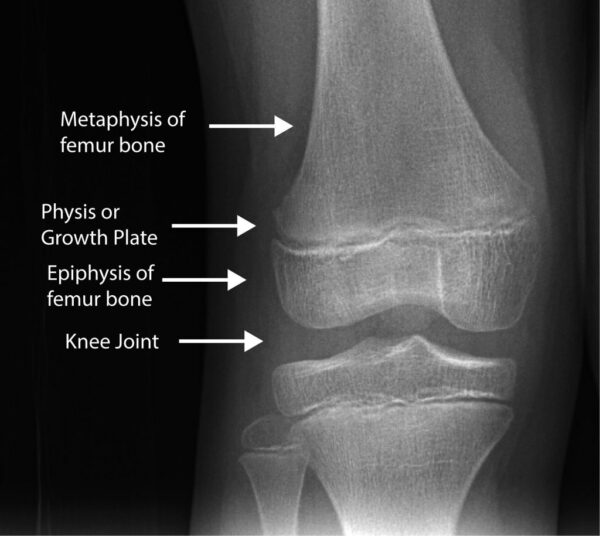Children and teenagers often wonder how tall they will be when they grow up and whether they can grow taller after 16 years of age. Parents ask the same questions, too. Many would agree that genetics has the largest role in governing your height, which means tall parents are more likely to have tall children and vice versa.
In their teenage years, children usually experience the so-called growth spurt in which their body is shooting upward at an incredible speed. Trousers that quickly become too short and regular trips to the shoe stores are inevitable occurrences during puberty. However, how long does puberty last and can teens grow taller after 16? Read on to find out.
How people grow in height
Every person has their growth plates at the end of their long bones in the body. These are areas of elastic and smooth cartilage where growth takes place. When the growth plates fuse or close completely, your bones will stop growing.

You may wonder how the body decides when to fuse the growth plates. From a scientific point of view, people stop growing because they are genetically programmed to do so. Genetics starts working its magic at the moment of conception when a single cell becomes a complex organism. It continues to control how people grow and develop from birth until the completion of puberty. The purpose of growth is complete once their genes have orchestrated the development and growth of the body to the point that it can reproduce.
The typical growth
Most kids will gain about 10 inches in height in their first year of life. In the second year, they will add roughly four inches. Their growth rate will then slow down until the start of puberty.
During puberty, people hit their peak growth spurt. The average annual height gain for girls in puberty is three to three and a half inches whereas boys can grow taller by four inches a year. Height growth will steadily slow after teenagers hit their peak growth spurt until they reach their final adult height, which is usually four to five years after starting puberty.

Females generally reach their maximum height and stop growing taller between 14 and 16 years of age while males can continue their height growth until they are 16-18 years old. As hormones work differently for girls and boys, they mature at different ages.
It should be noted that the timing of the closure of your growth plates accounts for whether you can gain height anymore. You can absolutely get taller at 16 if your growth plates are still active or open. On the contrary, once they are close, you can no longer increase height naturally however much the effort you put into it.
Best tips to grow taller after 16
Watch your nutritional intake
A balanced diet is of utmost importance in maintaining good health and well-being. In addition, it also plays a major part in your height growth. Why so? As your body is growing, it needs a myriad of nutrients to support bone growth and build muscle strength. By eating nutritious foods, you can facilitate favorable conditions for optimal height growth.

- Consume more lean protein. You can find plenty of lean protein in white-meat poultry, white-fleshed fish, lean beef, low-fat cottage cheese, plain Greek yogurt, peas, beans, and lentils. Lean protein allows you to develop strong bones and muscles.
- Increase your calcium consumption. Calcium can be found in milk and dairy products such as yogurt and cheese as well as green leafy vegetables like spinach or kale. This mineral is instrumental in bone formation and development.
- Ensure a sufficient amount of zinc in your diet. Zinc is rich in such foods as oysters, pumpkin seeds, peanut, crab, and lamb.
- Supplement your body with vitamin D. Vitamin D is an indispensable factor in your height development. It fosters effective absorption of calcium, thereby boosting bone formation and height gain. Deficiency in vitamin D can lead to stunted growth or worse, rickets. For this reason, it is essential to provide your body with enough vitamin D through fish, mushrooms, exposure to sunlight, and vitamin D supplements.
- Limit your consumption of height hindering foods. These include soft drinks, pizzas, cakes, and candies. Rich in carbohydrates and sugars, they are harmful to not only your height gain but also your overall health.
Drink a lot of water
This is probably the easiest way to grow taller after 16. Water prevents toxic substances from accumulating within your body, thereby improving your metabolism. Drinking enough water aids in the cleansing process and enhances digestion. Once your body is free of toxic substances, efficient metabolism can take place to contribute to better bone growth.

On average, your body requires at least 8-10 glasses of water on a daily basis. Especially in the morning, you should drink 2 glasses of water after waking up to cleanse the digestive system and flush out any harmful substances.
Pay attention to your sleep
Good quality and enough sleep is another effective way to grow taller after 16. Did you know that your body produces the most growth hormone during deep sleep? Secreted by the pituitary gland, this hormone is largely responsible for your vertical development and boosts height growth, especially throughout your growing years. Believe it or not but you literally grow taller after a good night’s sleep.
Teenagers should sleep for 8-11 hours every night to ensure proper growth and development.
Practice exercises regularly to grow taller after 16
Exercise is crucial for teenagers to increase height during puberty. Some exercises to grow taller after 16 include skipping, jumping, hanging, cycling, and swimming. You can choose any exercises you like and practice them for at least 30 minutes a day to reach your maximum height potential.

There are many ways to enjoy the benefits of exercise. If you are an extrovert who likes spending time with people, you can join sports teams or enroll in a sports center within your school or area. You can also establish a team with your group of friends to play your favorite sports. Keep in mind that the more, the merrier. Besides, you would not even realize you are practicing when you have a good time playing with your friends.
On the other hand, for introverts, you can consider simpler exercises that can easily be performed at home such as cycling, yoga, skipping, hanging, or stretching.
Stay away from factors that hinder height
While the above-mentioned factors contribute to height growth, there are several factors to avoid if you want to achieve your desired height.
Scientists have shown that teenagers who smoke end up being shorter as adults compared with non-smoking teens. Smoking is harmful to both our general health and our height gain. Besides, the use of addictive substances like drugs and alcohol can weaken your bones and eventually stunt growth.
All in all, you can still grow taller after 16 if your growth plates have not fused yet. Be patient and consistent in following our tips to increase height and achieve your maximal height potential.
